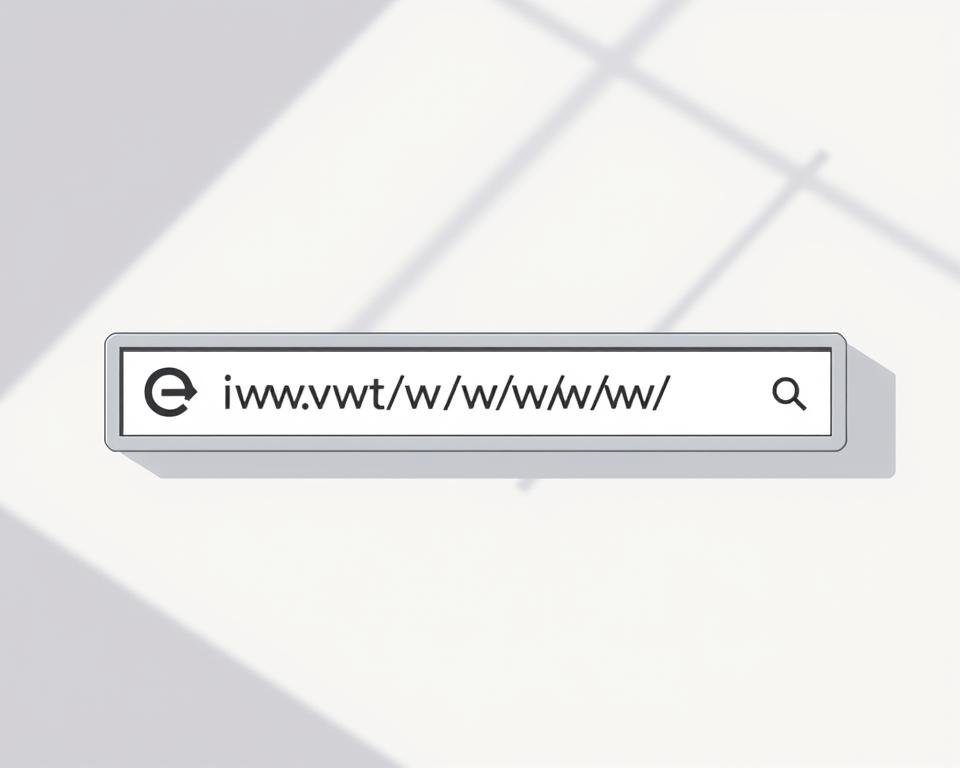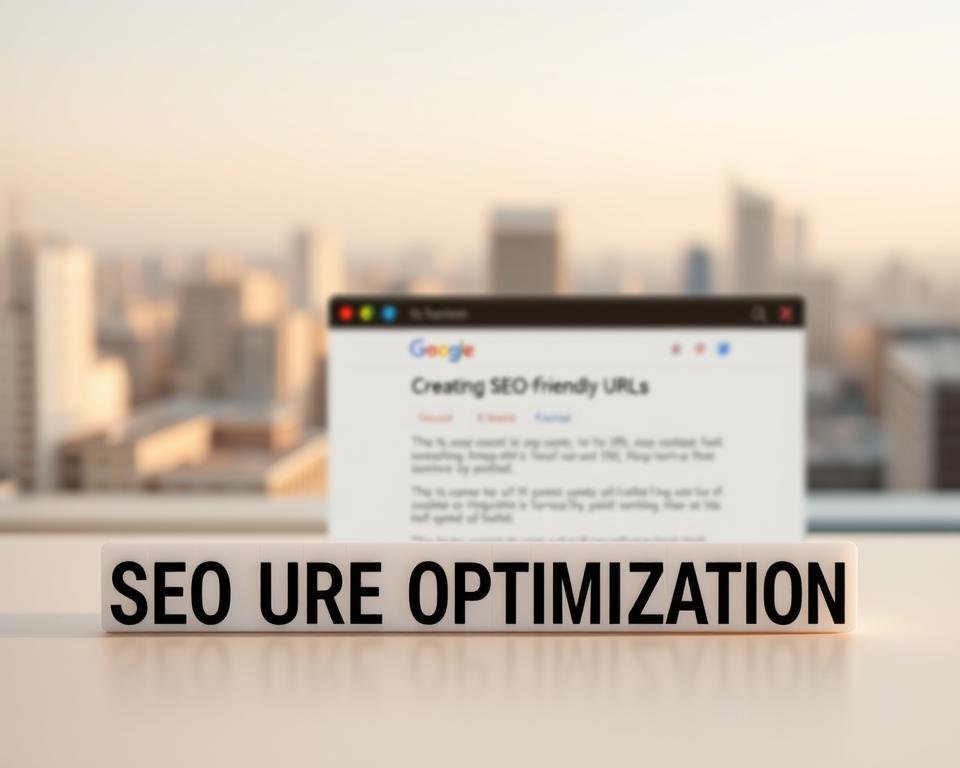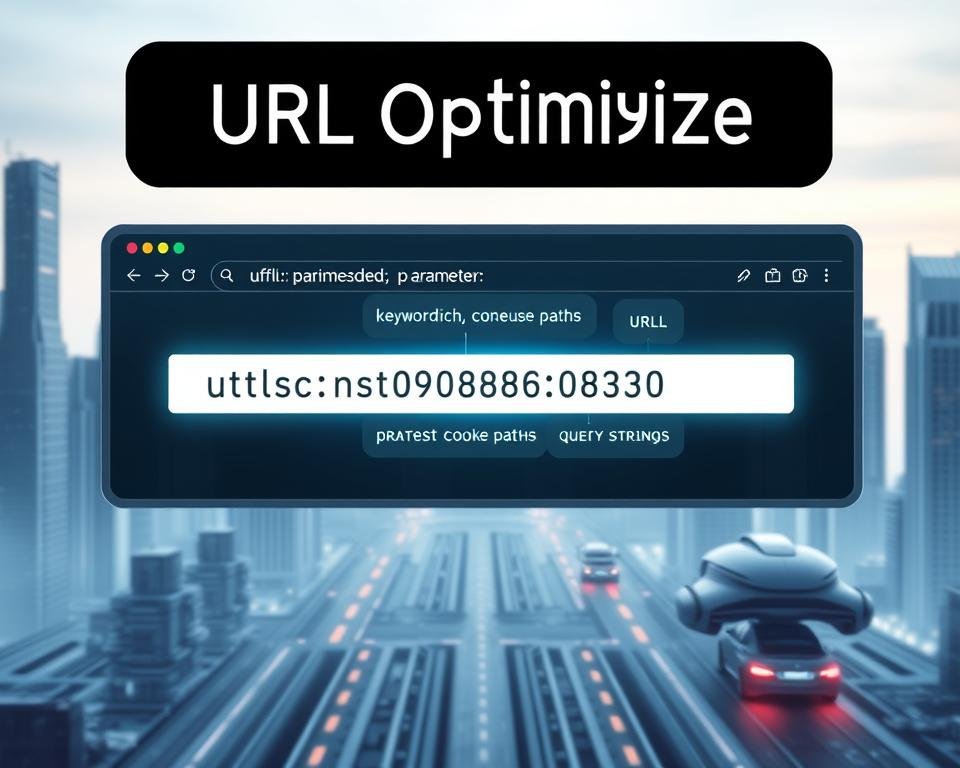Crafting SEO-friendly URLs is crucial for enhancing your website’s visibility and search engine rankings. A well-structured URL not only helps search engines understand your content but also improves user experience.
I will guide you through the process of optimizing your URLs, covering the importance of URL optimization and key components of effective URLs. By the end of this article, you will have a comprehensive understanding of how to drive more traffic to your site.
Key Takeaways
- Understand the importance of SEO-friendly URLs for your website.
- Learn the key components of effective URLs.
- Discover best practices for URL optimization.
- Improve your website’s visibility and search engine rankings.
- Drive more traffic to your site with optimized URLs.
- Enhance user experience with well-structured URLs.
Importance of an SEO-Friendly URL Structure
Understanding the importance of SEO-friendly URL structures can significantly improve your website’s visibility and usability. An effective URL structure is not just about making your website look organized; it’s about creating a better experience for your users and improving your search engine rankings.
Enhancing User Experience
A well-structured URL is informative and easy to read, allowing users to understand what the page is about even before they click on it. This clarity can lead to higher click-through rates and a better overall user experience. For instance, a URL like “example.com/seo-friendly-url” is more user-friendly than “example.com/page123.”
Boosting Search Engine Rankings
Search engines like Google favor URLs that are descriptive and contain relevant keywords. This is because such URLs provide a clear indication of the page’s content, making it easier for search engines to index and rank the page appropriately. By incorporating URL structure best practices and SEO URL tips, you can improve your website’s visibility in search engine results.
Moreover, an SEO-friendly URL structure helps in creating search engine optimized URLs that are more likely to be crawled and indexed by search engines. This, in turn, can lead to better search engine rankings and increased organic traffic to your website.
Key Components of Effective URLs
A well-crafted URL is more than just a web address; it’s a key factor in SEO. Effective URLs consist of several key components that make them both user-friendly and search engine optimized.

When crafting URLs, it’s essential to incorporate relevant keywords that accurately describe the content of the page. This not only helps search engines understand the page’s content but also improves the URL’s visibility in search engine results.
Use of Keywords
The strategic use of keywords in URLs is a fundamental aspect of SEO. By including keywords that are relevant to the content, you can significantly enhance your page’s visibility. For instance, if your page is about “SEO tips,” your URL could include these keywords to help search engines and users understand the page’s content.
Importance of Readability
Besides incorporating keywords, ensuring that your URLs are readable and easy to understand is crucial. A readable URL makes it simpler for users to navigate your website and for search engines to crawl your pages effectively. Avoid using complex strings of numbers or irrelevant characters that can confuse both users and search engines.
To achieve a balance between keyword inclusion and readability, it’s essential to craft URLs that are both informative and concise. This can be achieved by using hyphens to separate words, making the URL more readable, and avoiding unnecessary parameters or session IDs that do not add value to the URL’s meaning.
Best Practices for URL Length
The ideal URL length is a balance between brevity and descriptive value. While shorter URLs are generally preferred for their simplicity and ease of sharing, they must not compromise on being descriptive enough to convey the content’s context.
Finding the right length involves understanding the trade-offs between conciseness and clarity. A URL that is too short may not provide enough information about the page’s content, potentially affecting its search engine ranking.

Character Count Recommendations
Research suggests that URLs should ideally be under 100 characters for optimal performance. However, this can vary based on the specific context and content of the page.
URLs that are too long can be cumbersome and may be truncated in search engine results. It’s essential to strike a balance that works for both users and search engines.
Balancing Brevity with Clarity
To achieve the perfect balance, focus on including the most relevant keywords that accurately describe the page’s content. Avoid unnecessary words and characters that do not add value to the URL’s meaning.
- Use concise language
- Include target keywords
- Avoid unnecessary characters
By following these guidelines, you can create URLs that are both SEO-friendly and user-friendly, enhancing your overall URL optimization strategy.
Utilizing a Logical Hierarchy
To create an effective URL structure, it’s essential to utilize a logical hierarchy. This involves organizing content into categories and structuring pages in a hierarchical manner, making it easier for both users and search engines to navigate.
Organizing Content with Categories
Categorizing content is the first step in creating a logical hierarchy. This involves grouping related content together under relevant categories. For instance, an e-commerce website might categorize products into electronics, clothing, and home goods. Each category can then have subcategories, further refining the hierarchy.
Benefits of categorization include:
- Improved navigation for users
- Better organization of content
- Enhanced search engine crawling and indexing
Hierarchical Structuring of Pages
Once content is categorized, the next step is to structure pages hierarchically within these categories. This means creating a clear and logical flow from the homepage down to the most specific content pages. For example, a URL like example.com/electronics/computers/laptops clearly indicates the hierarchical structure.
| Level | Category | Example URL |
|---|---|---|
| 1 | Main Category | example.com/electronics |
| 2 | Subcategory | example.com/electronics/computers |
| 3 | Specific Product | example.com/electronics/computers/laptops |

By implementing a logical hierarchy in your URL structure, you can significantly improve both user experience and search engine rankings. This structured approach helps in creating clear, concise, and descriptive URLs that accurately reflect the content of the page.
Descriptive vs. Keyword-Stuffed URLs
In the realm of SEO, URLs that are both descriptive and optimized with keywords are highly valued. A well-structured URL can significantly enhance the user experience and improve search engine rankings.
When creating URLs, it’s essential to strike a balance between being descriptive and incorporating relevant keywords. A descriptive URL clearly communicates the content of the page, while keywords help search engines understand the page’s relevance to specific search queries.
Finding the Right Balance
To achieve this balance, focus on including the most critical keywords that accurately describe the page’s content. For instance, instead of using a generic URL like “example.com/products,” a more descriptive and keyword-rich URL would be “example.com/best-seo-practices.”
Avoid keyword stuffing, as it can lead to penalties from search engines. The goal is to create a URL that is both informative and concise.
Avoiding Over-optimization Pitfalls
Over-optimization occurs when a URL is excessively packed with keywords, making it look spammy. This can negatively impact the site’s credibility and search engine rankings.
- Use keywords naturally and sparingly.
- Ensure the URL is easy to read and understand.
- Avoid repeating keywords unnecessarily.

By finding the right balance between descriptive and keyword-rich URLs, you can improve your site’s SEO performance and enhance the user experience. Remember, the key is to be natural and concise in your URL structure.
Using Hyphens vs. Underscores
As I explore the nuances of URL structure, the debate between hyphens and underscores emerges as a critical consideration. The choice between these two characters can significantly affect how search engines interpret and rank your website’s URLs.
The distinction between hyphens and underscores is not merely stylistic; it has real implications for SEO. Search engines like Google treat hyphens as word separators, while underscores are not. This difference can influence how URLs are crawled, indexed, and ultimately ranked.
The Impact on SEO
Using hyphens in URLs can improve SEO by making it clearer to search engines what the page is about. For instance, a URL like example.com/seo-friendly-url is more informative than example.com/seo_friendly_url. This clarity can enhance the URL’s visibility in search results.
A comparative analysis of the two approaches is illustrated in the following table:
| Characteristic | Hyphens | Underscores |
|---|---|---|
| Search Engine Interpretation | Treates as word separators | Not treated as word separators |
| SEO Impact | Generally considered better for SEO | May not be as SEO-friendly |
| User Readability | Enhances readability | Can be less readable |
User Readability Considerations
From a user’s perspective, hyphens can make URLs more readable. When URLs are easier to read, users are more likely to understand what the page is about before clicking on it, which can improve click-through rates.
For example, a URL like example.com/our-products is straightforward and tells the user exactly what to expect. In contrast, a URL with underscores, such as example.com/our_products, might be slightly less intuitive.

In conclusion, when deciding between hyphens and underscores for your URL structure, it’s essential to consider both SEO implications and user readability. By choosing the right approach, you can enhance your website’s visibility and user experience.
Implementing URL Redirects
A well-planned URL redirect can significantly enhance user experience and search engine rankings. URL redirects are essential for directing users and search engines to the correct page when a URL has changed.
There are several scenarios where implementing URL redirects becomes necessary. For instance, when you migrate your website to a new domain or change your URL structure, redirects help maintain the integrity of your existing links.
When to Use 301 Redirects
A 301 redirect is a permanent redirect that indicates a webpage has been moved to a new location. It’s crucial to use 301 redirects when:
- You are permanently moving a webpage to a new URL.
- You are consolidating multiple pages into one.
- You are changing your website’s domain.
Using 301 redirects helps preserve the link equity of the original page, ensuring that search engines update their indexes with the new URL.
Avoiding Broken Links
Broken links can significantly harm user experience and search engine rankings. To avoid broken links, it’s essential to:
- Regularly audit your website for broken links.
- Update internal links to point to the new URL.
- Implement 301 redirects for any removed or moved content.
By following these best practices, you can ensure a smooth transition for both users and search engines, maintaining the integrity of your URL structure.
The Role of URL Parameters
Optimizing URL parameters is essential for creating search engine-friendly URLs that enhance a website’s SEO. URL parameters, also known as query strings, are used to track user behavior, manage session IDs, and sort or filter content on a webpage.
When not managed properly, URL parameters can lead to issues such as duplicate content, crawl errors, and diluted link equity. Therefore, understanding their role and impact on SEO is vital.
Understanding URL Query Strings
URL query strings are the part of a URL that follows a question mark (?). They are used to pass data to a web application, allowing for dynamic content generation and user tracking. However, excessive or poorly structured query strings can complicate URL readability and negatively affect search engine crawling.
Best practices for managing query strings include:
- Limiting the number of parameters
- Avoiding unnecessary parameters
- Using canonical URLs to specify preferred versions of a page
Simplifying URLs for Better SEO
Simplifying URLs involves making them more readable, concise, and relevant to the content they represent. This not only improves user experience but also enhances search engine crawling and indexing.
To simplify URLs, consider the following strategies:
- Remove unnecessary parameters and characters
- Use descriptive and concise keywords in the URL
- Avoid using default or session-based IDs in URLs

By understanding and optimizing URL parameters, webmasters can significantly improve their website’s SEO performance, enhancing both user experience and search engine rankings.
Measuring URL Performance
Analyzing URL performance is vital for identifying areas of improvement in your website’s SEO strategy. By understanding how your URLs perform, you can make informed decisions to optimize your website for better search engine rankings.
To effectively measure URL performance, it’s crucial to use the right tools. These tools provide insights into how your URLs are performing in terms of traffic, engagement, and conversion rates.
Tools for Tracking URL Effectiveness
Several tools can help you track the effectiveness of your URLs. Some of the most popular include:
- Google Analytics: Provides detailed insights into website traffic, including the performance of individual URLs.
- SEMrush: Offers technical SEO audits that include URL performance analysis.
- Ahrefs: Helps in analyzing URL performance through backlink analysis and keyword rankings.
These tools can help you understand which URLs are performing well and which need improvement.
Adjusting Based on Analytics Insights
Once you have gathered data on your URL performance, it’s essential to adjust your SEO strategy accordingly. This might involve optimizing underperforming URLs with relevant keywords, improving the user experience by simplifying complex URLs, or redirecting URLs that are no longer relevant.Example of URL Performance Metrics
| URL | Traffic | Conversion Rate |
|---|---|---|
| example.com/page1 | 1000 | 2% |
| example.com/page2 | 500 | 1.5% |
| example.com/page3 | 2000 | 3% |

By regularly monitoring and adjusting your URL strategy, you can ensure that your website remains optimized for search engines and continues to attract relevant traffic, thus following URL structure best practices for better SEO performance.
Common Mistakes in URL Structuring
Many website owners unknowingly sabotage their SEO efforts with poorly constructed URLs. A well-crafted URL is essential for both user experience and search engine optimization.
Examples of Poor URLs
Poorly constructed URLs can be confusing for users and search engines alike. For instance, URLs that are overly long, contain unnecessary characters, or lack descriptive keywords can hinder a website’s visibility.
- URLs with excessive parameters:
example.com/product?id=12345&category=shoes - URLs with unnecessary characters:
example.com/!products+shoes - Non-descriptive URLs:
example.com/page1
How to Avoid These Errors
To avoid common URL structuring mistakes, it’s crucial to follow best practices. Here are some tips:
- Keep URLs concise and descriptive.
- Avoid using unnecessary characters or parameters.
- Use hyphens instead of underscores to separate words.
Let’s examine a comparison of good vs. bad URL practices:
| Poor URL | Better URL |
|---|---|
example.com/!products+shoes&id=123 |
example.com/shoes |
example.com/page1?id=12345 |
example.com/product-name |
example.com/products?category=shoes&type=sneakers |
example.com/shoes/sneakers |
By following these guidelines and avoiding common mistakes, you can create a URL structure that enhances both user experience and SEO performance.
Future Trends in URL Structure
As search engines continue to evolve, the importance of URL SEO techniques will only grow. Creating search engine optimized URLs will remain a crucial aspect of digital marketing strategies.
Voice Search and Its Impact
The shift towards voice search is changing the way we approach URL structure. With voice assistants like Siri and Google Assistant becoming increasingly popular, URLs need to be optimized for voice search queries. This means using natural language and long-tail keywords to match the way people speak.
Evolving SEO Practices
As SEO practices continue to evolve, URL structure will need to adapt. This includes staying up-to-date with the latest URL SEO techniques and best practices for creating search engine optimized URLs. By doing so, businesses can ensure their website remains visible and competitive in the ever-changing digital landscape.
